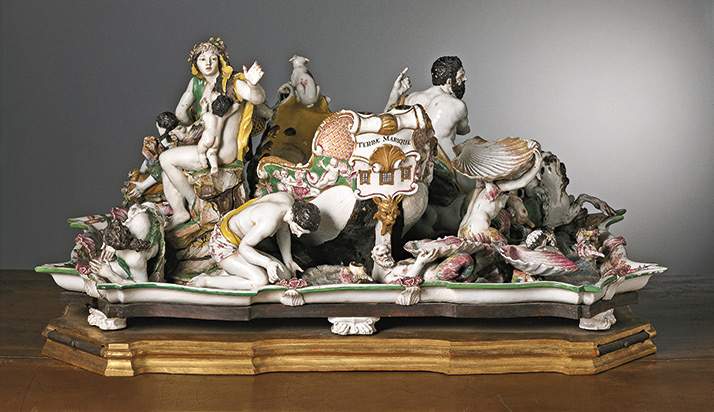Fragile treasures of princes on display at Pitti Palace: precious porcelain between Vienna and Florence
Scheduled from November 13, 2018 to March 10, 2019, at the Grand Dukes’ Treasury of the Pitti Palace in Florence, the exhibition Fragile Treasures of Princes. The Pathways of Porcelain between Vienna and Florence, which displays porcelain but also paintings, sculptures, hardstone commissions, waxes, ivories, crystals, tapestries, furniture and engravings that offer a fertile dialogue between the arts, to celebrate the magnificence of porcelain during the Grand Duchy of Tuscany under the Lorraine dynasty. Above all, the exhibition recounts the vicissitudes of two manufactories, the Florentine factory founded by the Ginori family, and the Viennese factory founded in 1718 by Claudius Innocentius Du Paquier, linked by solid relationships that allowed the two factories to assume a decisive role in the transmission of decorative motifs, forms and artistic techniques that in fact influenced the definition of the taste of the period.
Space, then, is given to recounting the entrepreneurial energy of Marquis Ginori, a Florentine senator, who ranged over wide horizons, so that the porcelain produced in his manufactory reflected an international taste, which could take into account the Florentine tradition, yes, but also the influences of the Far East and in particular the Chinese, and which sought to satisfy demanding patrons in Italy and abroad. To thrive, the manufactory also had to be open to novelties from outside, and the atmosphere and artistic production (in Doccia, but in general in Lorraine Florence, were thus marked by a cosmopolitan criterion of excellence). Porcelain was no exception, and became not only the mirror of what was being experimented with in other art forms, but also reflected a whole series of social habits and fashions, in a time of great changes, including food (suffice it to say that the Medici were the first in Italy, in 1663, to import chocolate, securing it from Spain).
And these new habits made necessary, explains Uffizi director Eike Schmidt, “the creation of new objects and pottery, which we can imagine clinking and shining in the Kaffeehaus erected on purpose in Boboli to a design by Zanobi del Rosso, finished in about 1785 (and which will reopen soon, after a campaign of restoration). Another architectural jewel commissioned by Pietro Leopoldo, round and rounded, inspired by the Viennese baroque: it is a brick and lime construction, but from a distance it looks like a fantasy in Doccia porcelain, almost a giant chicchera, with a small dome for a lid.”
The exhibition, curated by Rita Balleri, Andreina d’Agliano, and Claudia Lehner-Jobst, is in collaboration with the Prince of Liechtenstein Collection (Vaduz-Vienna). Explains Johann Kräftner, director of the Princely Collections of Liechtenstein: “European collaboration and a thinking that transcends national boundaries are manifested in the events of the two manufactories, belonging to a common history of government and collecting converged in this same exhibition review due to the current cooperation between the two institutions and their collaborators. An exhibition that traces this long history not in Vienna, where it was already examined in the 2005 Barocker Luxus Porzellan exhibition, but in Florence, where the ideas found common fertile ground.”
The exhibition is accompanied by a catalog published by Sillabe, and for more information you can visit the Uffizi Galleries website.
Pictured: Gaspero Bruschi, attributed (Florence 1710-1780) and Manifattura Ginori, Doccia, Centrotavola (c. 1754-1756; polychrome painted and gilded porcelain, wood; Gazzada, Cagnola Collection)
 |
| Fragile treasures of princes on display at Pitti Palace: precious porcelain between Vienna and Florence |
Warning: the translation into English of the original Italian article was created using automatic tools. We undertake to review all articles, but we do not guarantee the total absence of inaccuracies in the translation due to the program. You can find the original by clicking on the ITA button. If you find any mistake,please contact us.





























